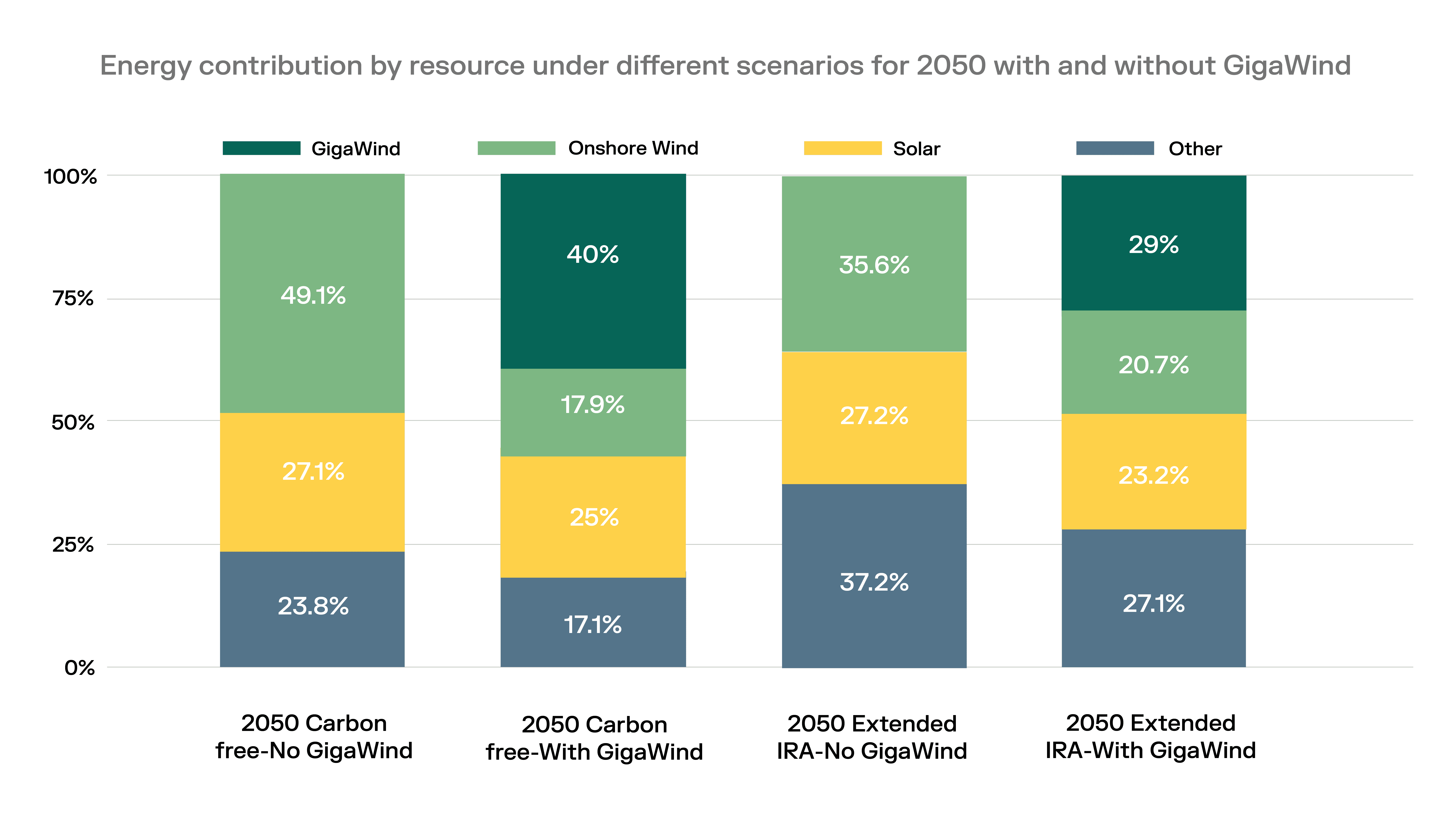DeSolve Study: GigaWind™ has enormous economic and environmental impact

The U.S. power grid will use renewable energy produced using bigger and better wind turbines – delivered to more and more places – as fast and as quickly as they can be deployed and can produce energy.
That is among the main conclusions of a new report by Princeton University researchers Dr. Jesse Jenkins and Dr. Nestor Sepulveda through their consulting firm DeSolve LLC.
According to the report, “Techno-economic Assessment of GigaWind for Low-carbon Power Systems,” GigaWind™ – Radia's term for the largest onshore wind turbines of today and the even larger ones to be deployed in the future – will have a significant impact on U.S. grid capacity, energy prices and emissions.
Assuming a conservative WindRunner™ fleet by 2034, the researchers’ model produced the following results:
- Market sizing: GigaWind could add up to 216 GW through to the U.S. grid, represent up to 40% of total U.S. electricity generation and create $300 billion to $800 billion of high IRR opportunities across the nation. Without a fleet constraint, GigaWind could add up to 590 GW.
- Energy Prices: GigaWind could decrease U.S. energy prices up to 16%. With an extended IRA, it will be the key technology to bring energy prices below $20 per MWh. And in a Net-Zero by 2050 scenario, it will ensure prices remain below $40 per MWh.
- Emissions: GigaWind could reduce U.S. grid emissions by 15% to 31%, and its efficiency reduces the need for flexible fossil-fuel generation. Importantly, it could help avoid up to 760 million metric tons of CO2 emissions per year.
- Green Electrons: GigaWind will enable the lowest-cost green electricity and lowest-cost green hydrogen for both grid-connected and off-grid-connected projects, such as the hard-to-decarbonize industrial sectors that include steelmaking, cement, railways, aviation, shipping and trucking. This would eliminate up to 25% of global energy-related CO2 emissions, according to the U.S. Department of Energy.
Radia tapped DeSolve in 2023 to analyze GigaWind’s potential role in the U.S. power system, accounting for its projected cost and operational profile and the Inflation Reduction Act (IRA) impact from 2023-2035 and 2036-2050.
“Based on our modeling results, GigaWind technology presents a revolutionary opportunity for the wind energy market,” the report said. “The technology can significantly aid in decarbonization efforts. The economic viability of GigaWind remains strong, even after the expiration of policy incentives, making it a cost-effective renewable energy source. As the industry addresses supply chain and project development challenges, GigaWind's impact is expected to be transformative, reducing reliance on fossil fuels and helping achieve a more affordable decarbonized energy mix.”




